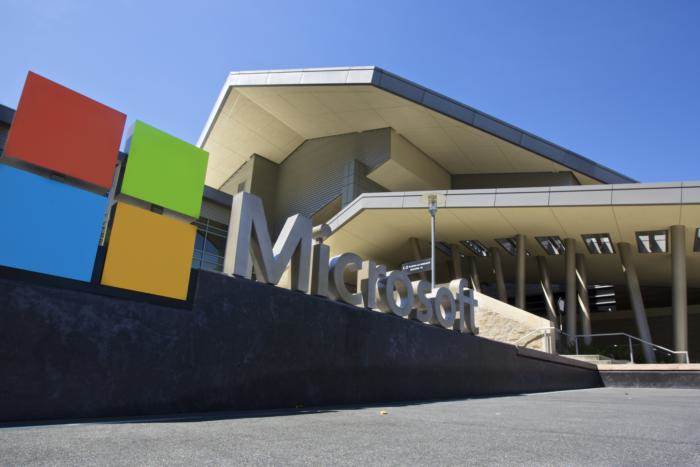
This was a big year for Microsoft. The HoloLens began shipping to developers, Windows 10 made it through its first year intact (though not without controversy), and the company got into the desktop computer market with a stunning mega-touchscreen.
But there were a few key announcements that flew under the radar this year. While they may not have the splash factor of a Surface Studio or HoloLens, these developments have the potential to alter Microsoft and the world for years to come.
Here’s the rundown on what you probably missed.
Microsoft’s new bot tools help build conversation partners
At its Build developer conference, Microsoft outlined a vision for a conversational computing platform. The idea is pretty simple: Traditional user interfaces are hard to understand right off the bat, so we should let people just talk with computers.
In practice, that means the company is developing intelligent bots along with its Cortana virtual assistant. It revealed an open source Bot Framework to make it easier for developers to build automated conversation partners that work with different chat apps, like Skype, Facebook Messenger, Kik and others.
Late in the year, Microsoft showed off a bunch of new bot capabilities, including an Azure-based QnA Maker service that lets organizations upload FAQ documents and use them as the basis for a bot that can answer users’ questions.
Right now, bots aren’t a massive business, but it’s clear that Microsoft will continue building tools to push them into the mainstream. It will be interesting to see if that actually goes somewhere.
Specialized hardware can accelerate networking, machine learning and more
Microsoft had something special to share at its Ignite tradeshow in Atlanta earlier this year. The company revealed that it had deployed hundreds of thousands of Field-Programmable Gate Arrays across its entire cloud footprint to help accelerate key tasks.
FPGAs let developers configure circuitry to tackle particular tasks faster than other types of processors. In Microsoft’s case, they’re using them at first to accelerate software-defined networking between compute instances in Azure.
The benefits are available in beta now as Accelerated Networking, a free Azure feature that gives users transfer speeds of up to 25Gbps (bits per second) and latency between 25 and 50 microseconds. Moving SDN functions off the server can also free up more server hardware for computing.
FPGAs are also useful for certain machine-learning tasks, among other things, and Microsoft has been using them to its own benefit. The company is working on bringing FPGA-based acceleration to some of its machine-learning-based cloud services in the future.
AI gets its own division under Satya Nadella
In late September, Microsoft announced that it’s creating a new AI & Research division. This may seem like nothing more than a bizarre bit of organizational wrangling, but it’s an important sign of where Microsoft sees its business going.
That division, led by Microsoft Research chief Harry Shum, will include more than 5,000 engineers. Microsoft’s internal research arm has been at the forefront of some of the company’s key AI innovations, like its Cognitive Services APIs and Skype Translator service.
Those projects are all important for Microsoft’s future. The Cognitive Services APIs are its way to let developers easily implement machine-learning features in their apps. Skype Translator may help the messaging and video-calling service stay competitive against a horde of challengers.
By creating this division, Microsoft appears to be investing heavily in what it sees as the future of computing.
Visual Studio and PowerShell go cross-platform
There are a lot of people used to developing for Microsoft platforms, and two of the key tools for doing so have gone cross-platform in the past year. Microsoft rebranded Xamarin Studio as Visual Studio for Mac, meaning the company’s integrated development environment for Windows now has a Mac counterpart.
In addition, PowerShell for Linux launched, giving operations professionals who are used to that scriptable command line a new set of tools that work outside the confines of Windows.
The rebranding of Xamarin Studio isn’t much more than a visual change at this point, but it seems like a harbinger of what’s to come. If Microsoft had wanted to kill off Xamarin Studio and avoid investing in it, they could have kept the same name and left it alone to rot. That’s not what the company’s doing.
Bash comes to Windows, while Microsoft further embraces open source
It’s in Microsoft’s best interest to extend the reach of its .NET programming framework and other developer tools to platforms beyond those that it controls. Expect to see more from Microsoft in this regard in 2017.
All the Visual Studio and PowerShell expansion this year was made possible in part by Microsoft’s open-sourcing parts of .NET. This is part of an overall move by the company to embrace open-source software.
In September, GitHub revealed that Microsoft had more contributors to its open-source projects than any other company on the platform, which is a far cry from the company’s previous approach. November saw the tech titan join the Linux Foundation as a platinum member.
At the end of March, Microsoft announced it would bring the popular bash (short for Bourne Again Shell) command line to Windows by building an entire Linux subsystem for the OS, working with Ubuntu creator Canonical. That’s a big change for a company that previously called Linux a cancer.
Jim Zemlin, the foundation’s executive director, said at the time that he thought Microsoft is really interested in supporting open source. It has to, he said.
“In a world where things are in the cloud, everybody has a computer, there is too much software to be written for even Microsoft, with all their engineers, to write it on their own,” he said. “It ain’t gonna happen.”
So what’s next for the company in 2017? AI, open source and bots are poised to remain key parts of its strategy going forward.







